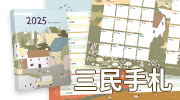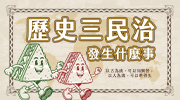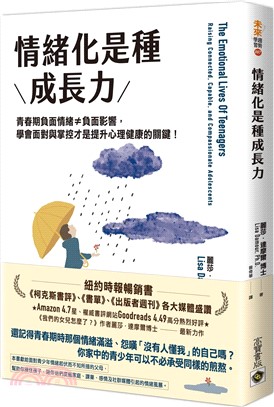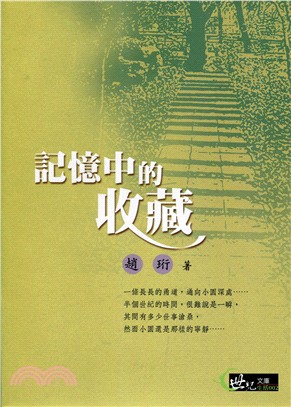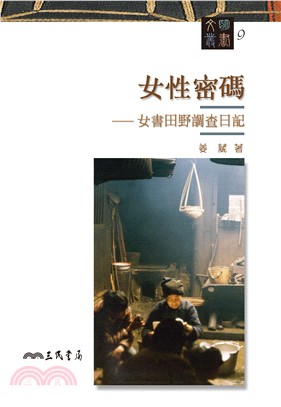商品簡介
A sequel to the 2011 Contemporary Taiwanese Literature and Art Series, this volume introduces the masterpieces of 18 local artists from Taiwan featured in the Taipei Chinese PEN quarterly. They represent some of the best in painting, calligraphy, sculpture, ceramic, metal art, and installation art from Taiwan across a wide spectrum of styles that includes modern and classical, as well as a blending of the local with the foreign . . .
向國際大眾介紹台灣當代知名的藝術家
收錄18位藝術家的簡介、創作歷程、作品介紹,以及珍貴的名作圖像。除了知名畫家外,也囊括雕塑家、書法家、裝置藝術家等等。包括:王攀元、李奇茂、楊英風、孫超、劉國松、鄭善禧、朱銘、林惺嶽、李義弘、何懷碩、李轂摩、董陽孜、吳烗三、薛平南、奚淞、袁金塔、徐玫瑩、涂維政等人。
作者簡介
由作家、譯者、編者組成,為社團法人,亦為國際筆會PEN International之中華台北分會(Taipei Chinese Center)。本會長年關注文學、藝術發展,譯介國內作家創作,推動文化外交。
成立於1924年,由胡 適、蔡元培、徐志摩等文化人士發起,首任會長為蔡元培。1959年在台復會,歷經張道藩、羅家倫、林語堂、陳裕清、姚朋、殷張蘭熙、朱炎、余光中、彭鏡禧等會長,現任會長黃碧端於2014年12月18日接任,林水福任秘書長。筆會發行之季刊-The Taipei Chinese PEN《當代台灣文學英譯》,創刊於1972年秋,早年單行英文,近年增加中文原作附錄。發行逾四十年,為台灣最持久不斷將中文創作英譯,向國際推廣之刊物。
目次
Preface
Wang Pan-Youn 王攀元
Wang Pan-Youn: Where Bitterness Is Beauty, and Loneliness Is Art
苦澀是美感,孤獨是藝術
Joseph WANG 王哲雄
Translated by Yauling HSIEH 謝瑤玲and Joel J. JANICKI 葉卓爾
Li Chi-Mao 李奇茂
Nativist Themes vs. Lofty Sentiments: on Li Chi-Mao’s Paintings
鄉野豪情:李奇茂的傳奇與成就
HSIAO Chong-ray 蕭瓊瑞
Translated by David VAN DER PEET 范德培
Yuyu Yang 楊英風
My Life as an Artist
楊英風藝術生命的自述
Yuyu YANG 楊英風
Translated by Michelle Min-chia WU 吳敏嘉
Sun Chao 孫超
Sun Chao’s Road to Ceramics
我的陶瓷之路
SUN Chao 孫超
Translated by SUN Yilin 孫逸齡
Liu Kuo-Sung 劉國松
Liu Kuo-Sung: Master of Modern Chinese Ink and Wash
劉國松:中國水墨一代宗師
LEE Chun-yi 李君毅
Translated by David VAN DER PEET 范德培
Cheng Shan-Hsi 鄭善禧
No Art Without Color: Joie de Vivre in the Works of Cheng Shan-His
丹青妙手鄭善禧
LIU Jung Chun 劉榕峻
Translated by David VAN DER PEET 范德培
Ju Ming 朱銘
Thus Speaks Ju Ming
朱銘曰
PAN Hsuan 潘煊
Translated by Carlos G. TEE 鄭永康, Yauling HSIEH 謝瑤玲and Joel J. JANICKI 葉卓爾
Lin Hsin-Yueh 林惺嶽
Lin Hsin-Yueh’s Focus on the Motherland
林惺嶽畫作的母土凝望
Chao-yi TSAI 蔡昭儀
Translated by Sterling SWALLOW 師德霖
Lee Yih-Hong 李義弘
Lee Yih-Hong: Pioneer Ink Wash Painter in Postwar Taiwan
臺灣戰後水墨的拓荒者 李義弘
WU Chitao 吳繼濤
Translated by David VAN DER PEET 范德培
Ho Huaishuo 何懷碩
Ho Huaishuo and the Artist’s Affair with the Moon
流逝的月光──永恆的美感
YEN Chuan-ying 顏娟英
Lee Ku-Mo 李轂摩
Infinity in a Scroll: Lee Ku-Mo’s Painting and Calligraphy
李轂摩的書畫世界
Shih-Ping TSAI 蔡詩萍
Translated by Linda WONG 黃瑩達
Tong Yang-Tze 董陽孜
The Calligraphy of Tong Yang-Tze
董陽孜的書法
Compiled by Michelle Min-chia WU 吳敏嘉
Tong Yang-Tze: Choosing a Different Path
董陽孜總是選擇不一樣的路
Cora WANG 王力行
Translated by David VAN DER PEET 范德培
A-Sun Wu 吳炫三
Primitive Charm in the Art of A-Sun Wu
阿三的蠻荒魅惑
Carlos G. TEE 鄭永康
Syue Ping-Nan 薛平南
Syue Ping-Nan: Master of Calligraphy and Seal Making
薛平南:書印雙雋
TSAI Ming-tsan 蔡明讚
Translated by David VAN DER PEET 范德培
Shi Song 奚淞
Buddhist Artist Shi Song
修行人的藝術實踐──大樹之歌・畫說佛傳
YEN Chuan-ying 顏娟英
Translated by Brent HEINRICH 韓伯龍
Yuan Chin-Taa 袁金塔
Yuan Chin-Taa’s Art of Boundary Crossing
袁金塔的越界飄移與定錨
CHUANG Kun-liang 莊坤良
Translated by Darryl STERK 石岱崙
Meiing Hsu 徐玫瑩
Life as a Fugue: The Art of Meiing Hsu
徐玫瑩的賦格人生
CHEN Man-hua 陳曼華
Translated by David VAN DER PEET 范德培
Tu Wei Cheng 涂維政
A Poem of Our Time: Tu Wei Cheng’s Art
時代之詩:涂維政的藝術創作
SHEN Bo Cheng 沈伯丞
Translated by Linda WONG 黃瑩達
Notes on Authors and Translators
書摘/試閱
Li Yihong─Pioneer Ink Wash Painter in Postwar Taiwan
臺灣戰後水墨的拓荒者 李義弘
Wu Chitao 吳繼濤
李義弘(1941~ ) Lee Yih-Hong (also Li Yi-Hong)
Born in Tainan County, Taiwan, Lee Yih-Hong graduated from the National Academy of Arts. He has long been committed to integrating traditional techniques and creating new ideas for ink-and-water painting in Taiwan.
Lee Yih-Hong records nature through photography, painting, and calligraphy. He also introduced a new technique into the field of photography; he combines photography with fresh ink, and adds images with precise levels to make the work look peculiar and innovative. His paintings of rural southern Taiwan established his fame. In recent years, his landscape works have focused on fusing the mountains, light, clouds…. into a harmonious texture. His composition tends to be simple, and the images are more minimalistic. He is the winner of the Zhonghan Literature Award and Wu San-lien Arts Award.
Li Yihong was born in 1941 in southern Taiwan. He didn’t receive much in the way of formal schooling, but since he was a rather weak and sickly boy from early on, frequent visits to the local Chinese pharmacy soon became a staple of his life. Watching the ancient doctor-cum-apothecary write out prescriptions with an old, dilapidated writing brush in a spidery hand (while feeling his patients’ pulse with the other) was enough to wake the youngster’s interest in calligraphy and drawing, and it was his budding zeal and passion for the arts that paved the way for his later career as a painter. After gaining acceptance into the National Academy of Arts (now National Taiwan University of Arts), he learned the ropes from widely respected teachers and artists such as Fu Juanfu (傅狷夫) and Gao Yifeng(高一峰).
The winds of change and modernization were blowing through Taiwan’s ink wash circles by the time Li Yihong graduated, and it was more or less by chance that he found a sympathetic teacher and mentor in Jiang Zhaoshen(江兆申), at the time deputy director of the National Palace Museum in charge of the books and paintings department. Their affiliation and friendship would last for 27 years, from 1970 until Jiang’s death, and the older man’s influence, both in terms of ink wash skills and literati aesthetics, helped Li to define his own creative position and artistic approach. Incorporating both tradition and innovation into his modus operandi, the young artist soon began to make photography an important element of his creative process, using it to sample useful themes and motifs for his art. This is particularly obvious in his early work, and after ten years of honing his individual style he held his first solo exhibition at the Spring Gallery in Taipei, which made a big splash in the ink wash community. The following year Li received further recognition in the form of the Sun Yat-sen Art and Literature Award, and in 1984 he was offered a position at the National Institute of the Arts (now Taipei National University of the Arts), where he taught painting until his retirement in 2007.
Traveler and Photographer
Local motifs have always been one of Li’s main sources of inspiration for his work. The sights, scenes, and landscapes of our island, in particular its natural scenery, are captured by the artist’s brush with a style and authenticity that are rooted in a deep sense of aesthetic harmony. This was something he largely developed under the aegis of Jiang Zhaoshen, the abovementioned deputy director and one of the curators of the National Palace Museum, a man that aided Li in making sense of the things he saw, heard, and experienced, and was a formative influence on his use of lines and color, as well as his succinct and focused style. The other crucial component in Li’s unique creative mélange is his professional-level skill with a camera, the fact that he made the viewfinder one of his chief tools. During the 1980s, works such as Tainan Confucius Temple with its poignant red walls and ancient trees, or White Clouds in a Blue Sky with its deliberately concise chunks of color, were like a breath of fresh air, opening up new possibilities for a long-established art form.
In 1986, Li Yihong traveled to India and Nepal. Upon his return, he held an exhibition titled Journeys in Northern India, and works like Ancient Mountain Town, Old Temple High in the Mountains, Bodhisattva, and Dal Lake all speak of the artist’s fascination with the Buddhist tradition, as well as showing the profound impact the foreign vistas had on his imagination. Here we find a focus and spirituality that transcends the limitations of conventional Chinese landscape painting. Two years later, he released a series of paintings titled Song of Trees. Some of these works have a stark, almost forbidding quality, such as Old Buddy and Verdant Vibrancy, while others, including Field Tree, are brimming with bucolic nostalgia. Another work from the same year, Eerie Autumn Yard, also displays the thematic originality and multi-layered textures that established Li as one of the most important ink wash artists of his generation.
Since times immemorial, traveling and observing the world around have been mandatory for visual artists wishing to find fresh ideas. By visiting different places, taking photos of his environment, and sketching from life, Li Yihong managed to gain a deeper understanding of the nuanced and intricate relationship between natural scenery and the mood of a painting, between reality and composition. In the prime of his life, Li published Nature and Painting (自然與畫意), in which he attempted to merge the media of photography and ink wash painting into a unified concept. The publication had a huge impact on students of drawing and sketching at the time, and it continues to influence the discourse on artistic representations of the world to this day. Meanwhile, Li’s travels to Europe, India, Nepal, South Africa, and China, among other places, further nourished and fertilized his imagination, enriching his mental vision and enhancing the breadth of his artistic scope, especially with regard to the sheer magnificence and beauty of the natural world. Around 2001, having reached the ripe age of 60, Li began to communicate his travel experiences via a series of scroll paintings, such as Realms and Rivers, Pines on Huangshan, and Yuliao Guandu, guiding the audience’s view from the near to the far, and offering oscillating perspectives of subtly entwined actuality and illusion, object and reflection. In this way, he updated the conventional content and form of traditional ink wash painting, imbuing the genre with new meaning and complexity through innovative modes of expression. This period in the artist’s life was marked by a growing focus on his living environment, something that went hand in hand with a decade-long period of introspection in Sanzhi, an area at the northwestern tip of Taiwan. His mature and increasingly sublime style is a reflection of his ever-deepening love for his native soil, nothing short of an attempt to capture the soul of the land.
Exploring Artistic Imagery
During this period, Li started to deliberately emphasize local scenes and motifs. Aware of his growing attachment to the rugged northern coastline, he shifted his focus away from compositional refinement towards almost scrupulous attention to his actual surroundings. Five paintings with Balian Creek (八連溪) as their overarching theme also serve as a kind of testimonial about his experiences working with jiaobai bamboo paper, a special kind of rough-textured paper made in Puli’s Guangxing Paper Mill. From 2002 onwards, Li made ventifacts one of his main subject matter, employing a blend of black and color inks to depict the rugged coastline with its assorted windkanters and other types of interesting-looking terrain shaped by wind and water. Letting the various tints and hues bleed into each other, and applying the traditional Chinese texturing technique called cunfa (the “wrinkle method” 皴法) the artist recreates the lines and silhouettes of rocks and sea in a fashion that is both realistic and impressionistic, underscoring his standing as a modern literati painter with a particularly deft and elegant style. Adding a new twist to the conventional jimofa (the “layer method” 積墨法), a technique that uses distinct shades of black and gray to convey nearness and distance in landscape paintings, Li applied the same principle to colored ink for even more impressive and lifelike breadth and depth. As a whole, these compositions are held together by vigorous brushstrokes with a strong calligraphic quality. At 60, decades of practicing calligraphy had made Li an expert at structuring his paintings’ space to perfection, while his sure, swift strokes render all vistas stunningly vivid, as can be witnessed in works such as Linshanbi at Ebb Tide or Ventifacts at Shimen. These paintings also laid the groundwork for later works, including for example the Tiaoshi Coast series. Li Yihong once said:
Our natural environment affords painters an endless amount of material that can inspire and provide them with nourishment for their creative minds. Take the huge boulders crashing from steep mountainsides, for example, only to crack up into smaller pieces that are slowly carried down rivers and creeks until they reach the plains. The flowing water shapes these rocks and stones into a myriad of forms, until their surfaces, ledges, and corners are often as smooth as glass, with no apparent lines, cracks, or other obvious traces of texture.
Li elaborated in more detail when talking about the build and structure of rocks and boulders in the Balian Creek near Sanzhi:
When the creek’s water levels are low, many rocks will be jutting out from the water and exposed to the sunlight, which reveals the mud and debris adhering to the boulders. . . . When the tide is going out, even the littoral rocks are glistening in grayish-white hues. Therefore, when painting seascapes, or more specifically coastal scenes, it is usually not necessary to use cunfa or other traditional techniques for depicting rough shapes and textures.
At this point in his career, Li Yihong was frequently traveling to Hualien, and on these trips he would take many photographs to serve as templates for paintings to be executed in fine detail after his return. Particular favorites were scenes featuring the Liwu and Shakadang Rivers with their wealth of huge rocks and boulders strewn across riverbeds meandering through steep, majestic gorges. In many ways, Li’s output from this period is a thematic extension of his series of works picturing Taiwan’s craggy northern shorelines with their assorted wind-and-water-faceted rocks. In works such as The White Boulders of Liwu River and Liwu River Gorge the artist aims to capture the magnificent beauty of marble boulders with their veined and speckled texture, while Sparkling Liwu River and Towering Cliffs by the Liwu River, two oversize paintings, show the dramatic precipices and narrow ravines that make up the Taroko Gorge’s most spectacular stretches, giving the viewer a vivid sense of the dazzling heights, striking depths, and at times almost overwhelming feeling of closeness and cool seclusion that are all part of the experience. The various inks are allowed to run and blend with each other to generate layers of sublime shades, tints, and hues, all serving to create the almost three-dimensional quality and abstract aesthetic appeal that are two of the hallmarks of Li’s freehand imagery. In 2013, Li painted a hexaptych titled Tiaoshi Coast, sort of a culmination of his artistic “craggy rock” journey that had taken him from sketching from life to more abstract modes of expression. The piece is teeming with the artist’s passion for his subject matter, a fact that is visible in the delicately executed texture of the rocks, using traditional cunfa and chromatic shading for depth and a fascinating interplay of light and shadow, with the rocks and boulders appearing like contrasting reflections in an artistic photograph.
His bravura brushwork and consummate skill with lines and other calligraphic elements gave Li the confidence to further expand his artistic scope in works such as Acacia Grove and Cold Spring with their succinct style and composition. In pieces like Mount Jade Cypress and Mount Jade Tieshan, basking in a kind of subdued golden glow, the astute observer may perceive the freshness of the artist’s impressions from his ascent of Mount Jade, with cypresses vaguely visible in the thick mists, like coiled and twisted dragons perched ominously in front of a dark cave, and spots of bright verdancy in the distance showing here and there through the thick foliage of the immediate surroundings.
主題書展
更多書展今日66折
您曾經瀏覽過的商品
購物須知
為了保護您的權益,「三民網路書店」提供會員七日商品鑑賞期(收到商品為起始日)。
若要辦理退貨,請在商品鑑賞期內寄回,且商品必須是全新狀態與完整包裝(商品、附件、發票、隨貨贈品等)否則恕不接受退貨。

























